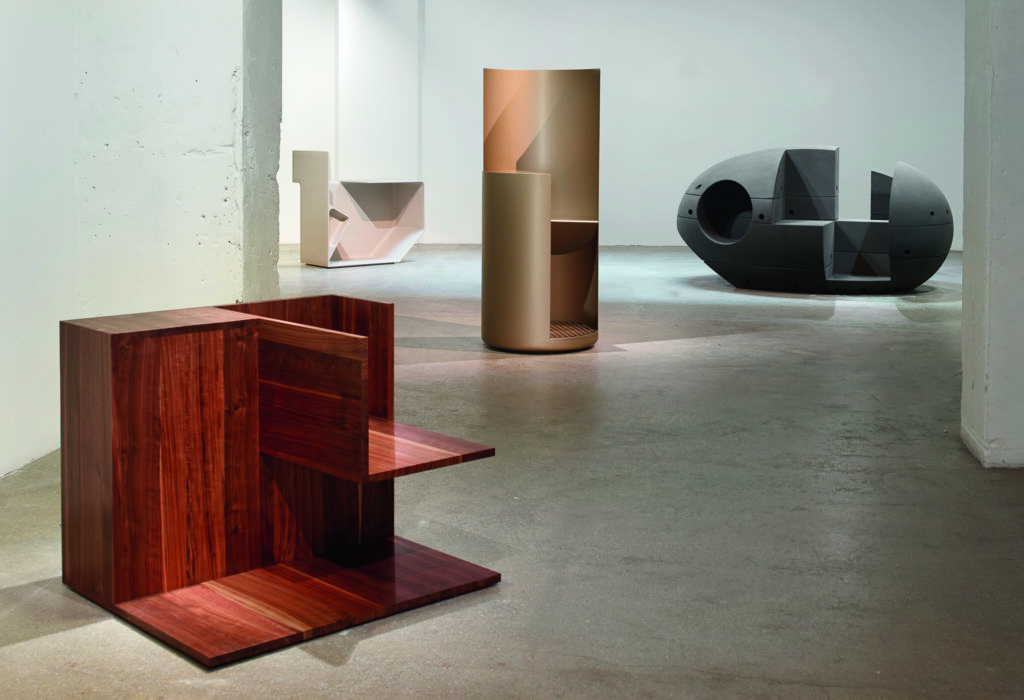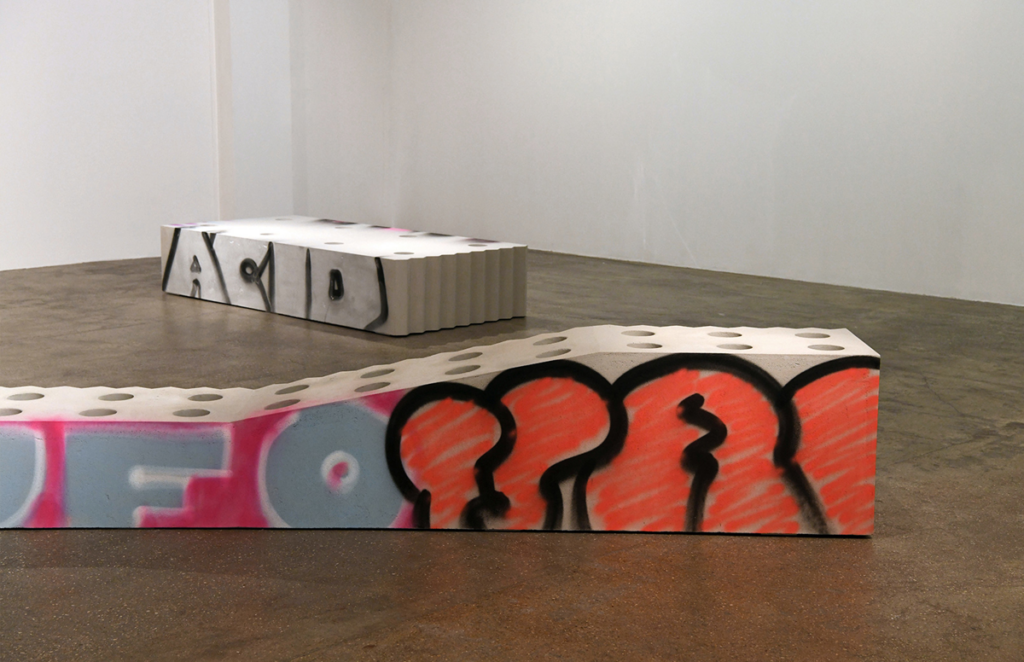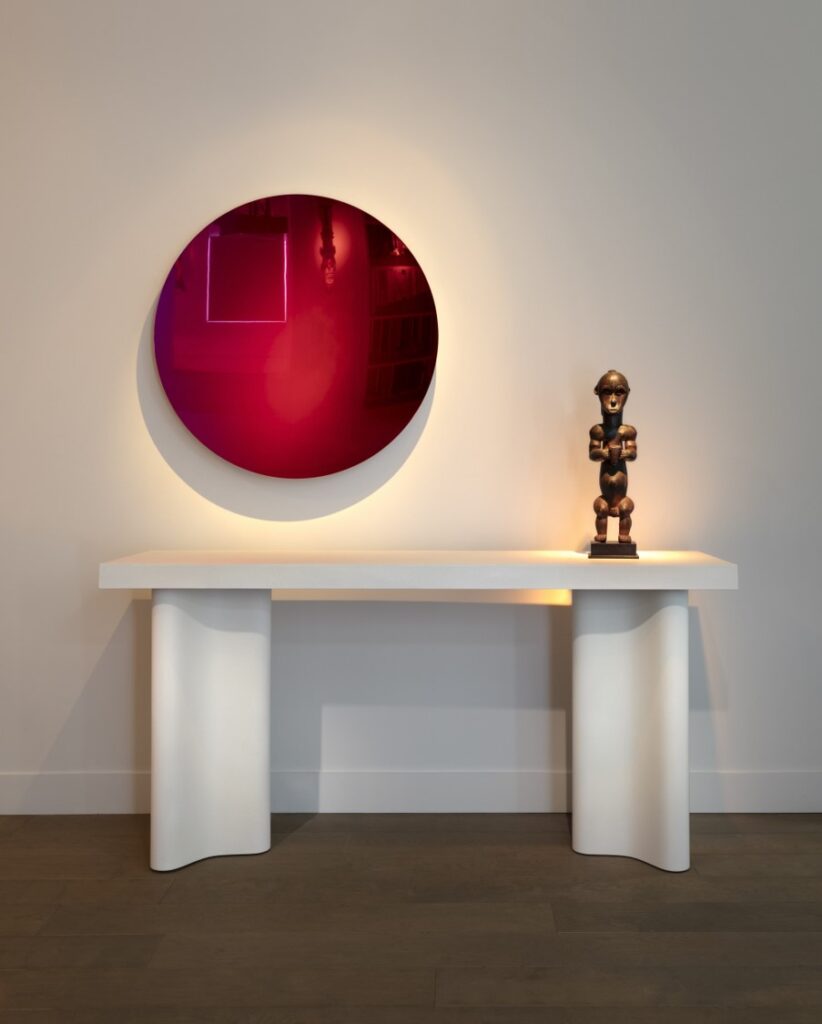
“I don’t think you can understate the importance of Didier. He has been instrumental in the careers of so many contemporary designers—including mine—with his gallery giving us the opportunity to work outside of strictly commercial or industrial projects. In many ways, he exemplifies what is known as a patron. Didier has a freshness of vision and finds such joy in his metier—something that first struck me when I met him over 25 years ago and has not changed at all.” Marc Newson
My guest this week for Collecting Design: The Legends was Didier Krzentowski, who along with his wife Clémence opened Galerie kreo in Paris in 1999, at the dawn of the collectible design market. The Krzentowskis were true pioneers in the field. And yet Didier began our talk with a remembrance of his hero, Pierre Staudenmeyer (1952-2007), who set the precedent on which Galerie kreo was founded.
Staudenmeyer launched Galerie Néotù in Paris in 1984; it was the world’s very first dedicated to contemporary collectible design. Staudenmeyer believed that design should be produced beyond the commercial arena, in small quantities, in order to stimulate groundbreaking, experimental ideas. Within the realm of the factory, he claimed, pushing boundaries is impossible.
An early patron of cutting-edge designers like Elizabeth Garouste and Mattia Bonetti, Dan Friedman, and Jasper Morrison, Staudenmeyer is the godfather of what has come to be known as Design Art—functional objects, crafted by hand, imbued with the personal expressions of the makers. Ahead of its time, Galerie Néotù struggled financially and had to close in 2001, just two years after the Krzentowskis launched their gallery.
Galerie kreo became the torchbearer of Staudenmeyer’s business model, but took it to the next level, developing a design lab that invites designers to pursue their dreams and substantiate advanced ideas with a few restrictions. This approach has demonstrated the power of couture production, pursuing the ultimate potential of industrial designers working outside industry. Today the gallery is one of the world’s most influential hubs for avant-garde design, where a handful of lucky design talents are given the opportunity to create inspiring, of-the-moment objects. The results are regularly featured in the finest interiors and publications across the globe.
The year of Galerie kreo’s birth, 1999, marked a turning point in the development of collectible design. It was in many ways the departure point that led directly to the culture of design collecting that we enjoy today. It was that moment when mid-century masterpieces gained real traction in the market while receiving unprecedented attention through landmark museum exhibitions and visionary publications. It was also when the Krzentowskis—along with trailblazer David Gill—established what contemporary design produced in a gallery context could truly be. Unlike its forebearer, Galerie Néotù, kreo developed a compelling brand identity, with a particular look, guided by defined principles.
Although Galerie kreo represents a wide variety of designers from different backgrounds and career paths—Marc Newson, Konstantin Grcic, Hella Jongerius, Ronan and Erwan Bouroullec, Pierre Charpin, Wieki Somers—the work has a certain signature allure, which can often be recognized from afar at premier global design fairs. It is the taste for the minimal and the vanguard; superb craftsmanship employing complex, advanced processes and fresh, innovative materials. The designer conceives the designs, and then Didier goes to the end of the earth to bring the designs to life. He locates the best production houses all over the world—typically small, artisanal workshops—to achieve outcomes that are always polished, completely resolved, super stylish, and expressing the zeitgeist at its most elevated.
When the Krzentowskis started, they were looking for the leading talents from the world of industrial design, offering them the chance to practice in a different way. They have since cultivated a laboratory environment where the objects created exist somewhere on the continuum between art and design. The Krzentowskis are champions of design, who lead a unique program that helps design evolve toward its eternal limits. “With charm and elegance, Didier is a true visionary whose work has been fundamental to the recognition of design as an artwork,” I was told by Spanish artist-designer Jaime Hayon, who has long been represented by Galerie kreo.
It’s no wonder that designers of all stripes aspire to join kreo’s program. But very few can enter this elite club. The latest addition to the gallery’s roster is Virgil Abloh, the Chicago-based fashion designer of Louis Vuitton’s menswear and of his own streetwear label Off-White. For kreo, he created Efflorescence, a 20-piece furniture collection that showcases his signature street style in concrete architectural forms. Abloh spray painted each piece by hand with neon-hued graffiti. The effect is like concrete building fragments salvaged from any cityscape anywhere; and yet the collection looks perfectly at home in kreo’s Parisian gallery.
Over the course of their 21-year-long rich, ambitious, and creative career, the Krzentowskis have facilitated the creation of an amazing body of work—a stunningly wide array of objects of experimentation that have changed the course of design history.
This article was published today in Forum Magazine by Design Miami/. All images courtesy Galerie kreo.






